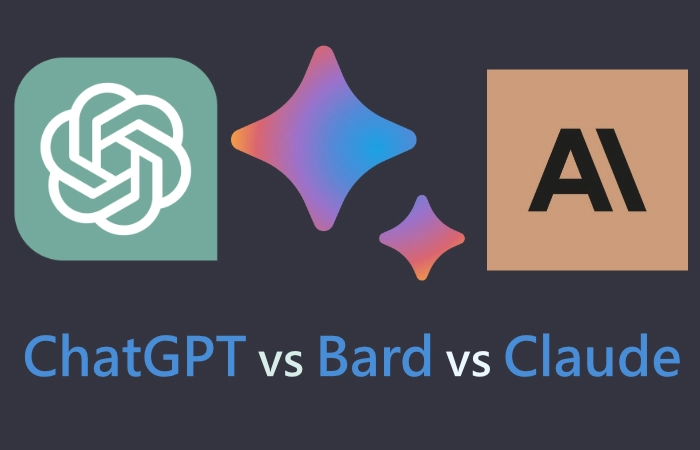If you are interested in learning more about the performance you can expect from a few of the major large language models currently available and fighting for our attention and in some cases our hard into cash. You might be interested in a new 30 minute comparison video which has been created by Matt Wolfe comparing ChatGPT vs Bard vs Claude and their features, specifications and parameters. In the video both OpenAI’s ChatGPT 3.5 and ChatGPT 4 are compared alongside Google’s Bard and Claude 2 released by the developing team at Anthropic.
Google Bard
Google’s recent venture into the realm of artificial intelligence, the Google Bard AI, is a remarkable testament to the ever-evolving capabilities of machine learning. Unveiled to the world on March 21, 2023, Bard is a product of Google AI’s relentless pursuit of innovation.
As a member of the LaMDA family of large language models (LLMs), Bard boasts an extensive training on an immense dataset comprising both text and code. This extensive foundation empowers the AI to fluently translate languages, craft creative content across a diverse range, and provide insightful responses to a myriad of questions.
The potential applications of Bard are vast and varied. Whether you’re seeking assistance with writing and editing, embarking on research projects, delving into creative pursuits, or aiming to enhance customer service, Bard is equipped to be a valuable ally. For instance, if you’re grappling with the intricacies of a foreign language, Bard can step in with accurate translations.
If you’re looking for a sprinkle of creativity, it can weave poems, scripts, and even musical compositions. For businesses, Bard could redefine customer service by offering personalized solutions and addressing frequently posed queries. Furthermore, the AI’s prowess isn’t limited to just factual assistance; it can also entertain with tales, humor, and poetic expressions. While still in its beta phase, Bard stands as a promising harbinger of a future where our interaction with computers transcends conventional boundaries, becoming more productive, creative, and insightful.
ChatGPT vs Bard vs Claude
The comparison video below pits four versions of these models against each other: ChatGPT 3.5 vs ChatGPT 4 vs Claude 2 vs Google’s Bard. The comparison is based on a range of factors, including cost, token limit, web browsing ability, summarizing long content, image recognition, data analysis, creativity, coding ability, accuracy, and availability.
Other articles you may be interested in that compares large language models :
OpenAI ChatGPT
OpenAI’s ChatGPT has emerged as a groundbreaking chatbot rooted in large language model technology. Introduced to the world on November 30, 2022, this AI marvel allows users an unprecedented degree of control over conversations. Users can seamlessly steer discussions in terms of length, style, intricacy, and even the choice of language. What sets ChatGPT apart is its ability to dynamically adapt to successive user prompts and responses, a feature termed ‘prompt engineering’, which ensures that each phase of the dialogue is contextually informed.
Originating from the GPT-3.5 architecture, ChatGPT has been meticulously fine-tuned to excel in dialogues. The secret sauce behind its conversational prowess is the Reinforcement Learning with Human Feedback (RLHF) technique. By leveraging human demonstrations and preferences, RLHF refines ChatGPT’s responses to align with desired outcomes.
The versatility of ChatGPT is evident in its wide range of applications. From crafting intricate pieces of creative content like poems, scripts, or music to serving as an informative assistant answering complex queries, its capabilities are vast. Whether you seek translations, assistance in academic or professional tasks, or merely a conversational companion, ChatGPT stands ready to assist. However, it’s crucial to remember that ChatGPT, despite its human-like text generation, remains a machine learning model. This means that while it often produces impressively human-like responses, it is susceptible to occasional inaccuracies.
For those eager to experience the capabilities of ChatGPT firsthand, a visit to the OpenAI website is in order. Currently, OpenAI generously offers this cutting-edge service free of charge.
Anthropic Claude
Anthropic, a pioneering research lab dedicated to the evolution of reliable, interpretable, and controllable AI systems, has unveiled its latest creation: Claude 2. This large language model (LLM) stands as a testament to the advancements in AI technology, building upon the foundation set by its predecessor, the original Claude model.
Claude 2 boasts several enhancements, such as the ability to process an astounding 100,000 tokens per prompt and generate outputs that span thousands of words. The model has been refined for an enhanced grasp of natural language queries, ensuring more accurate and sensitive responses, while minimizing the risk of harmful or offensive outputs.
The applications of Claude 2 are both diverse and impressive. Whether it’s distilling lengthy documents into succinct summaries, addressing intricate queries, crafting code across multiple languages, penning creative masterpieces, offering customer support, or discerning patterns in data, Claude 2 is equipped to handle it all. Despite being in its developmental stages, the model promises immense potential across various sectors. Businesses and researchers keen on leveraging its capabilities can access Claude 2 via the Anthropic API.
Delving deeper into the technical aspects of Claude 2, it’s evident that its proficiency stems from rigorous training on an expansive dataset, encompassing a rich tapestry of text and code sources ranging from books and articles to code repositories. The transformer architecture, a neural network variant renowned for its proficiency in natural language processing, serves as the backbone of Claude 2.
The model’s prowess is further validated by its performance on renowned benchmarks, including the SQuAD dataset for question answering and the GLUE benchmark for natural language understanding. All in all, Claude 2 marks a monumental stride in the realm of large language models, showcasing enhanced power and adaptability that sets new standards for future innovations.
Filed Under: Guides, Top News
Latest Aboutworldnews Deals
Disclosure: Some of our articles include affiliate links. If you buy something through one of these links, Aboutworldnews may earn an affiliate commission. Learn about our Disclosure Policy.







